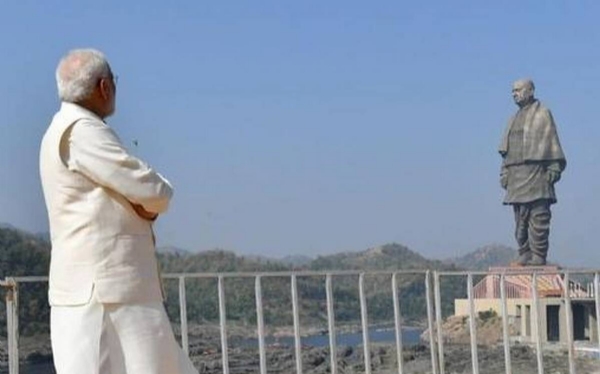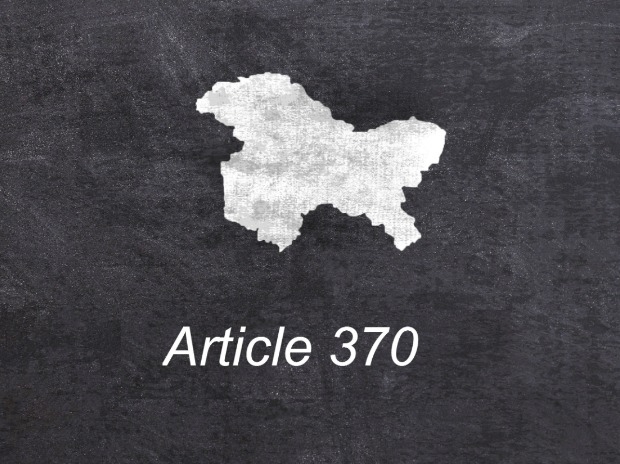Here's how Modi fulfilled Patel's dream of J&K!
15 Dec 2021 10:42:52
Sardar Vallabhbhai Patel played a decisive role in the Constituent Assembly and remained the moving spirit behind some of the landmark provisions of Indian principles. He was rational, logical, ethical and one of the most intelligent leaders of India.

Patel's unsung efforts has shaped Independent India into United India! He played a crucial role in persuading as many as 565 princely states to accede to the union of India after independence. He led the task of integrating princely states into the union of India after Independence in 1947. Apart from this, he was one of the primary people involved in drafting the Indian Constitution.
Persuading princely states to make India united was a major obstacle as it was divided into parts by the British. At that time, many people used to think that a diverse country like India can never remain united. It will fall apart. However, Sardar Vallabhbhai Patel was one of the men behind it. He was the key figure getting several hesitant Indian princely states to agree to join a united India in the tensed period between 1947 and 1949. This involved a tremendous degree of sensitive negotiation with these princely states. He used Kautilya's wisdom and Shivaji Maharaj's bravery to achieve the great feat of uniting India after partition.
The problem of amalgamating 562 independent states with a democratic self-governing India was difficult and delicate but it was essential to save India from balkanization, once the Paramountcy of the British crown would lapse. And then Sardar Patel took charge of the states department in July 1947. He sensed the urgent and imperative need for the integration of princely states. He followed an iron-handed policy. He made it clear that he did not recognize the right of any state to remain independent and in isolation, within India. Patel also appealed to the patriotic and national sentiments of the monarchs and invited them to join the forming of a democratic constitution in the national interest. He persuaded them to surrender defense, foreign affairs, and communication to the government of India.

He, by his tactics, broke the union of separatist princes. He had managed to integrate over 550 princely states but Jammu and Kashmir had remained out. However, it was not because of him but it was Nehru who took the charge of Jammu Kashmir and gave special status to Jammu and Kashmir. Article 370's provision was drafted in 1947 by Sheikh Abdullah, who had by then been appointed Prime Minister of J&K by the Maharaja and Nehru, who kept the Kashmir portfolio with himself and kept Sardar Patel, the home minister, away from his legitimate function. In this case Patel's dream of integrating Jammu and Kashmir with the rest of the country. The provision, however, is part of the “Temporary, Transitional and Special Provisions” of our constitution. He and Ambedkar were against granting special status to the state of J&K. Patel always put the nation first.
In addition to this, in 1954, Article 35A was introduced through a presidential order to continue the old provisions of the territory regulations under Article 370 of the Indian constitution. However, Vallabhbhai Patel's dream of integrating Jammu and Kashmir with the rest of the country was accomplished on August 5 when Home Minister Amit Shah declared that Article 370 has been scrapped and Kashmir fully integrated with the rest of India.

This was all started 5 years back when BJP comes into power for the first time after the Vajpayee government. BJP’s effort began in 2015 with the strategic sharing of power with PDP, which, out of sheer greed, joined hands with its arch enemy. However, in June 2019, BJP chose to discard Mehbooba and imposed President’s rule, which meant its own rule, but from Delhi. This was the first step towards that dream.
Later re-electing with a massive mandate in the April-May general elections, the government lost no time in acting on its pledge. The government issued the Presidential Order which leads to the interpretation of Article 370(3) in a way that “constituent assembly” is replaced with “legislative assembly”. So, essentially this paves the way for the repeal of Article 370 later by presidential order.
The Presidential Order uses Article 370(1)(d) to apply all provisions of the Indian Constitution (other than Articles 1 and 370 – which are already applicable) to J&K. The concurrence of the J&K government is necessary to effect such a step but since J&K is presently under President’s rule and has no state government, this was effectively dispensed with. Following which they applied provisions of the Indian Constitution to J&K. This order opened, the road for the government to scrap Article 370 completely and directly through a presidential order.
The order construes the Governor of the state of Jammu and Kashmir acting on the advice of Council of Ministers as the ‘Government of the State’, similar to other states in the union. After which Home Minister introduced a Jammu and Kashmir reorganisation bill, which made Ladakh a union territory separate from Jammu and Kashmir. PM Modi not only fulfilled the dream of Sardar Patel, Baba Ambedkar, Shyama Prasad Mookerjee and Atal Bihari Vajpayee and crores of patriots have been fulfilled.
